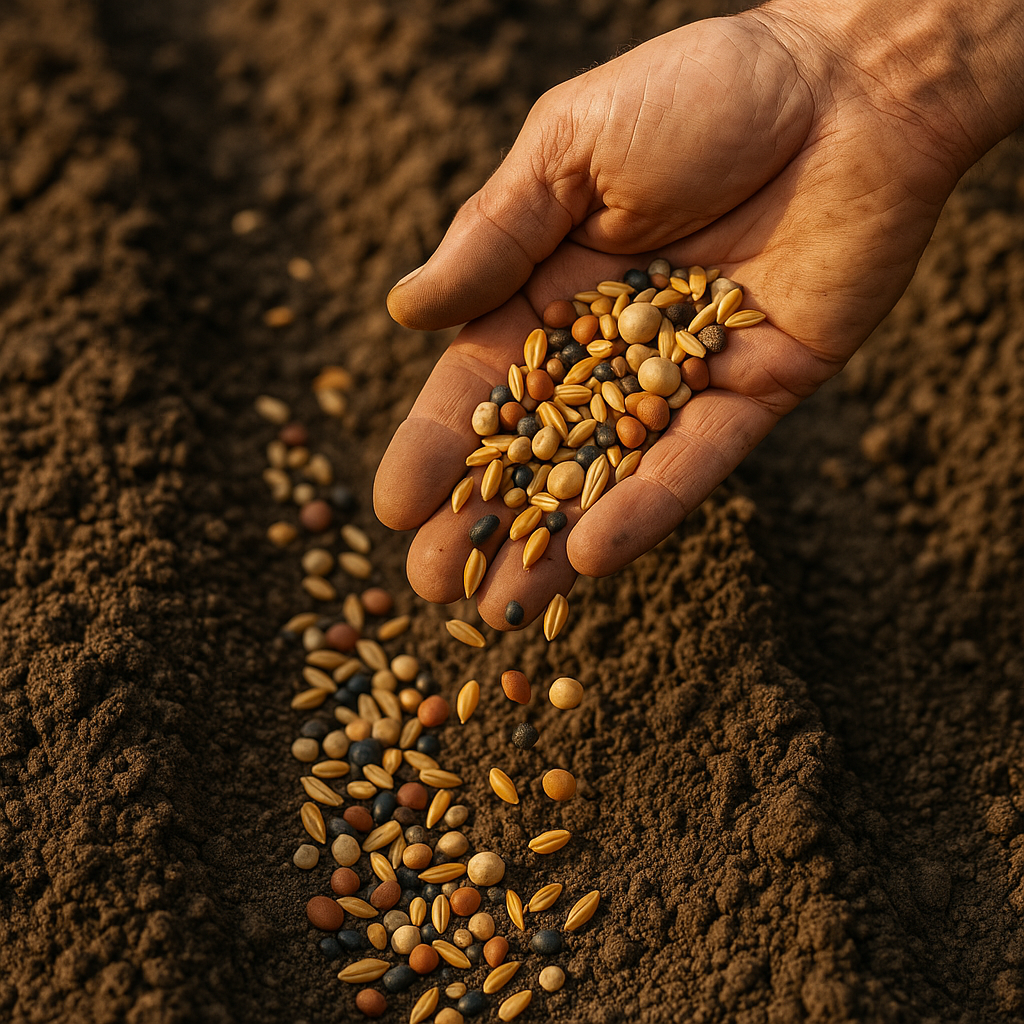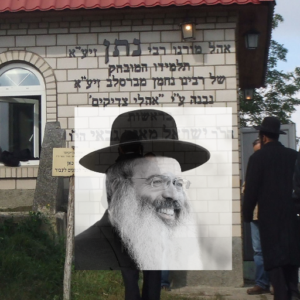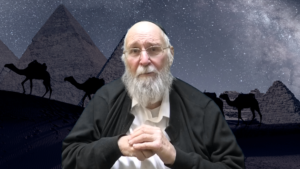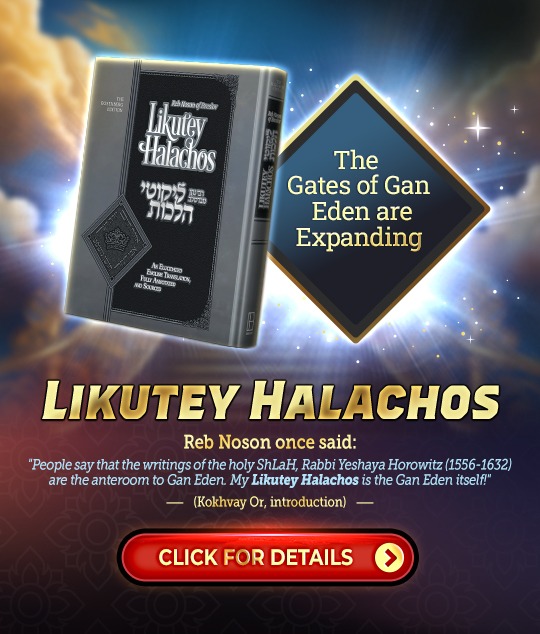- Advice ⬦ Joy ⬦ Read ⬦ Shabbat ⬦ Weekly Torah Portion
The Exchanges of Kila’im
The Five Prohibitions of Kila’im
Parshat Ki Tetze introduces us to a few of the intricate laws of kila’im — forbidden mixtures. The Torah delineates five distinct prohibitions:
- Kil’ei ilan — grafting two species of trees, such as producing a nectarine from a peach and a plum. Though the act of grafting is forbidden, once the fruit exists one may derive benefit from it.
- Kil’ei ha-kerem — mixing seeds within a vineyard. As the verse states, “Do not sow your vineyard with kila’im” (Devarim 22:9). Rashi explains this as planting wheat, oats, and grapes together, or planting crops too close to a vineyard.
- Kil’ei zera’im — planting different crops together in a field, such as cucumbers and tomatoes in close proximity, or sowing mixed seeds at once. With grapes, the prohibition intensifies, combining vineyard law with general planting mixtures.
- Kil’ei behemah — crossbreeding animals, such as creating a mule, or plowing with an ox and donkey together (Devarim 22:10). The act itself is prohibited, though benefit from the result is permitted.
- Kil’ei begadim (shatnez) — wearing wool and linen together, whether stitched, woven, or even hidden in linings. This too appears in our parashah.
Three of these five — vineyard, animals, and clothing — are in Ki Tetze, while the others are taught in Parshat Kedoshim. Together, they reveal the Torah’s deep concern with boundaries and purity in creation.
The very word kila’im bears layers of meaning. On one level it means mixture, but its root also echoes kele, a prison. A prison confines and traps; so too forbidden mixtures represent a constriction, a confusion of categories, a locking-up of the Divine order. To uncover this further, we turn to the insights of Rebbe Nachman.
The Chamber of Exchanges
Rebbe Nachman, in Likutey Moharan 24, introduces the concept of the Heichal HaTemurot, the Chamber of Exchanges. Though spoken of in plural, there is essentially one chamber — but at every spiritual level, a person encounters it again in new form.
The Chamber of Exchanges is the power of the yetzer hara to confuse opposites: light for dark, sweet for bitter, good for evil, and evil for good. This swapping deceives a person, holding him and the holy sparks he seeks to elevate, prisoner in spiritual kele-prison, unable to distinguish truth from falsehood.
This state of admixture traces back to Adam’s sin with the Tree of Knowledge of Good and Evil. Originally, good and evil were distinct. By eating from the tree, Adam — as the root of creation — internalized the mixture of opposites into himself, thereby releasing it into the fabric of the world. Ever since, creation itself is an admixture, where sparks of good lie trapped in shells of evil.
Our avodah as Jews is to resist the Chamber of Exchanges. By refusing to be fooled by its swaps, and by holding onto emet-truth, we separate the good from the evil. Each time we uncover a point of truth, we free the good from its captivity, restoring clarity and harmony to creation.
Joy as the Key to Escaping the Chamber of Exchanges
Rebbe Nachman reveals in Likutey Moharan 24 that the only way to overcome the Heichal HaTemurot — the Chamber of Exchanges — is through simcha. The yetzer hara traps a person in confusion, exchanging good for evil and light for darkness, by drawing him into sadness, worry, and despair. Depression and anxiety lock a person into kele, a prison of the soul. But joy is the key that breaks the lock.
True joy is not fleeting pleasure. As Reb Noson emphasizes, the only real happiness is the eternal joy of connecting to Hashem through Torah and mitzvot. When a Jew works to be b’simcha, even while confused and tested, he resists the power of the Chamber of Exchanges. Joy lifts him above the fog, enabling him to extract the good sparks that lie trapped within creation.
This explains the severity of the five prohibitions of kila’im. By mixing trees, seeds, animals, vineyards, or clothing, one creates a state of admixture that locks holiness inside the Chamber of Exchanges. These prohibitions are not merely agricultural or ritual; they reflect spiritual realities. When transgressed, they imprison holy sparks so deeply that they are extraordinarily difficult to retrieve. In most cases, the Torah allows some benefit from the results — such as fruit from grafted trees, crops from mixed seeds, or produce plowed by forbidden animal pairings. But kil’ei ha-kerem — mixtures of the vineyard — are unique: they remain forbidden forever. The vineyard must be destroyed, with no possibility of benefit. The Torah signals here the most dangerous form of admixture, a total trapping of holiness with no release.
The Five Joy-Tools Against Kila’im
What, then, do these five categories of prohibited mixtures represent on the inner level? They correspond to the five pathways of joy that counteract the Chamber of Exchanges. Reb Noson elaborates in Likutey Halachot, connecting them to the five voices of joy listed by the prophets: kol sason, kol simcha, kol chatan, kol kallah, kol omrim hodu laHashem ki tov ki le’olam chasdo.
These five voices parallel five practical methods to generate joy:
- Silliness and jokes — Breaking one’s dignity to laugh, act silly, and shake off heaviness. By lowering oneself in this way, a person rises to true simcha.
- Music, dance, and clapping — Physical movement and melody ignite holy momentum, lifting the soul out of sadness. Nigunim and dance bring warmth and joy.
- Finding good points (Azamra, LM II:282) — Even in the midst of failure, a person can uncover small sparks of goodness within himself: “another little bit, another good point.” This constant search transforms despair into song.
- Thanksgiving — Not only recognizing personal good points but also seeing the good in Hashem’s creation and expressing gratitude for it. Hoda’ah draws joy by shifting focus from lack to abundance.
- Joy of the future (simcha d’le’atid) — Anchoring happiness in the certainty of the ultimate redemption: Mashiach, resurrection, the Third Temple. By borrowing this light and joy of the future, one brings hope into a broken present.
Each of these five joy-tools is a weapon against the Chamber of Exchanges. Just as kila’im confuses and traps holiness in admixtures, these five paths of simcha unmask falsehood, liberate sparks, and restore clarity.
Notice where you’re “mixing species” in life, such as roles, times and goals
Mapping the Five Joy-Tools to the Five Prohibitions
Rebbe Nachman’s five pathways to simcha have precise inner parallels in the Torah’s five prohibitions of kila’im. Each joy-tool repairs a specific kind of forbidden mixing that otherwise traps holiness in the Heichal HaTemurot.
1) Sanctified silliness ↔ Kil’ei begadim (shatnez)
Clothing conveys kavod. Chazal note that Rabbi Yochanan called his garments mechabdutei — “my honorers” — because what we wear presents dignity. Halacha therefore expects a talmid chacham to keep clothing clean and respectable.
Shatnez — mixing wool and linen — symbolizes a broken honor, a dignity cobbled together from what should remain apart. On the avodah level, this is the person who refuses to use mili d’shtuta — lightheartedness and jokes — when he desperately needs that lift to avoid sinking into sadness. “It’s beneath my dignity,” he says, preserving a brittle kavod instead of saving his life with jokes and laughter.
That refusal is a kind of shatnez: stitching an image of honor from the wrong fibers. Rebbe Nachman teaches that at times one must lower dignity to raise joy. Sanctified silliness isn’t frivolity; it is a halachic-soul garment woven correctly — a permitted “fabric” that protects from the kele, the prison of sadness. When used at the right time, it keeps us out of the Chamber of Exchanges. When rejected out of pride, the person’s “honor” becomes a forbidden blend that traps him there.
2) Dance and rhythm ↔ Kil’ei behemah and plowing with mixed species
Movement is power. The Torah forbids plowing with an ox and a donkey together (Devarim 22:10) and crossbreeding species. On the inner plane, this warns against misdirected momentum — dancing and moving one’s body for illicit ends versus moving for holiness.
Reb Noson famously transmitted: “If you dance every day, you won’t see Gehinnom.” Until today, Breslov communities grab hands and dance daily after tefillah because rhythm shakes off the gloom that feeds the Chamber of Exchanges. But there is a counterfeit dance, an animal-drive that couples “ox and donkey,” harnessing energy to passions that pull in opposite directions. That is the inner kil’ei behemah.
David HaMelech models holy movement: he danced with joy before the Holy Ark wearing a simple linen garment. Michal, his wife, called it beneath royal dignity, but David answered he would become “even more light” for the honor of Hashem. That is dance as avodah — separating species, directing all force toward Torah and the Shechinah. Join the wrong “team” in your dancing, and you yoke opposites that don’t belong, slipping into the Chamber of Exchanges’s confusion. Dance for Hashem, and you disentangle motion from lust and return its power to simcha.
3) Azamra good points ↔ Kil’ei ha-kerem
Vineyards are different. Wine draws out what is inside: nichnas yayin, yatza sod. Both yayin and sod equal seventy, hinting that wine expresses the inward secret. In avodah, wine corresponds to Azamra — discovering and singing one’s nekudah tovah, the inner point that can be pressed for joy [like a grape].
The blemish of kil’ei ha-kerem is to refuse that small inner good and to keep mixing it with other “improvements.” “One pure grape? Not enough — toss in wheat, barley, extras.” Such mixing betrays an all-or-nothing perfectionism that blocks growth. Rebbe Nachman warns: until a person rejoices in even one tiny good point, the gates of holiness remain closed. The Torah underscores the gravity here: unlike other mixtures where benefit may remain, vineyard mixtures stay forbidden. Spiritually, when I won’t accept my little good point/grape, I neutralize the very spigot from which inner joy could have flowed. The result is total isur — no benefit — because I have invalidated the instrument of my own encouragement.
4) Thanksgiving ↔ Kil’ei zera’im
Hoda’ah is a step beyond Azamra: not only “I have a good point,” but “the world is full of Hashem’s good” — and I say thank You for each separate gift. Kil’ei zera’im — mixing diverse crops in one field or planting them too close — reflects a rushed, constricted mindset: no space, no pause, always adding, never stopping to thank for each discrete blessing.
Why does a farmer throw different seeds together? Often because he feels squeezed — no time, no acreage, no patience. That inner tzimtzum parallels a life with no gratitude breaks. Hoda’ah requires margin and attention: to notice a particular kindness, give it its row, and bless Hashem for this bounty before I sow the next. When I collapse everything into one hurried plot, I forfeit the refinement that thanksgiving brings and I re-enter kele — holiness jammed together and locked up. Separation of species here is the discipline of appreciation.
5) Joy of the future ↔ Kil’ei ilan (grafting trees)
Creation’s story begins with trees: the Tree of Knowledge of Good and Evil, and the Tree of Life. Adam’s sin blended good with evil and flooded the world with admixture. Our long arc of history is to separate again so we may taste the Tree of Life at the end.
Grafting different trees reenacts the primordial blend. “Not satisfied with what Hashem made — let’s splice lemon with orange, peach with plum.” Once done, halacha permits benefit, but initiating it expresses an itch to improve on creation by re-mixing categories. The repair for this impulse is simcha d’le’atid — borrowing light from the certain future when Mashiach comes, the dead rise, the Third Beit HaMikdash stands, and the mixture is finally sifted. Anchored in that end, I can wait, work, and not force a premature fusion of unlike species. Future-joy cools the urge to graft now. It says: trust the process; don’t break the borders; let each tree be what Hashem made it to be until the great rectification.
Why These Laws Are Chukim and How We Access Them
Moshe calls these laws chukim — decrees beyond human reason. Their inner logic belongs to Keter, the super-conscious crown that stands above intellect. Rebbe Nachman teaches that simcha draws from Keter. That’s the secret: we don’t “solve” the Chamber of Exchanges with cleverness. We out-radiate it with joy that descends from beyond the mind.
Keter’s light approaches us indirectly; when we touch it, we feel the betisha — the push-back. The Chamber of Exchanges weaponizes that push: it swaps sweet and bitter, confident and anxious, holy and profane. Our answer is the fivefold discipline of joy:
- Lower dignity and act silly when needed to rescue the heart
- Move the body for holiness until joyous warmth returns
- Locate the smallest point of good until it becomes a melody
- Name and thank for specific gifts so gratitude takes root
- Stand in the future’s sunlight and import its hope into today
Practiced patiently, these disentangle mixtures and release sparks from their prison. Each success lifts us a rung — Keter received indirectly — preparing us for the day when all sparks are gathered and the Chamber of Exchanges itself loses power.
Takeaways for the Week
- Guard dignity by using it rightly: when heaviness hits, choose sanctified silliness over brittle honor; avoid the “shatnez” of fake kavod.
- Move daily: a few minutes of dance or rhythmic clapping after tefillah realigns momentum with holiness.
- Azamra journal: write one concrete good point each day and sing it — don’t add “extras.” Let the “grape” be enough.
- Gratitude rows: list three distinct kindnesses and thank Hashem for each separately — give every “seed” its own field.
- Future-light practice: spend one minute visualizing geulah — Third Beit HaMikdash, techiyat ha-meitim, universal clarity — and borrow that joy into the present test.
- Boundary awareness: notice where you’re “mixing species” in life — roles, times, goals — and restore healthy separations.
Bracha
May Hashem grant us the courage to choose joy from Keter, to refuse the confusions of the Chamber of Exchanges, and to free every spark entrusted to us. May our laughter, movement, songs, thanksgivings, and future-hope gather light for Am Yisrael until we merit the complete geulah, bimheirah b’yameinu.
Shabbat Shalom u’mevorach
Meir Elkabas
- 0 comment






















